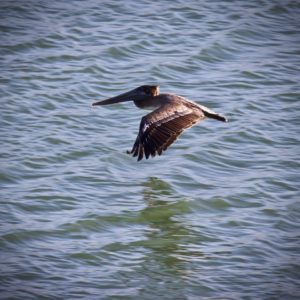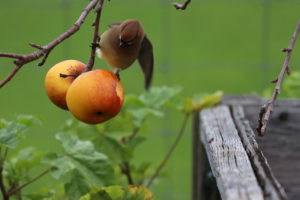These juvenile Brown Pelicans have a brown head and a white tummy. They were hatched to our south and are now migrating northward. Gail Jackson photographed the sight at Gualala Point Regional Park. Here is a group right alongside the Gualala River.
Western Gulls don't mind hanging out with the bigger birds.
And here Gail photographed a juvenile in flight, always a happy sighting.
Brown Pelicans have slow wingbeats, so they can be easier to photograph.
Thanks to Gail for allowing me to share her photo with you here.













